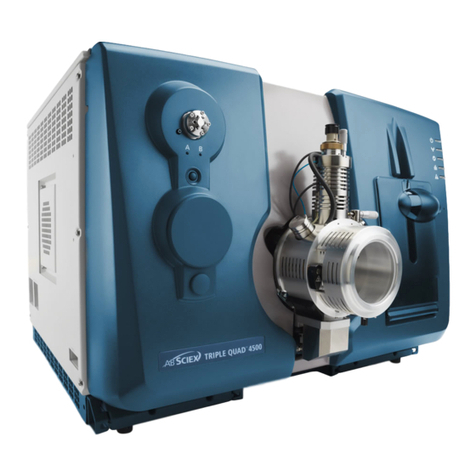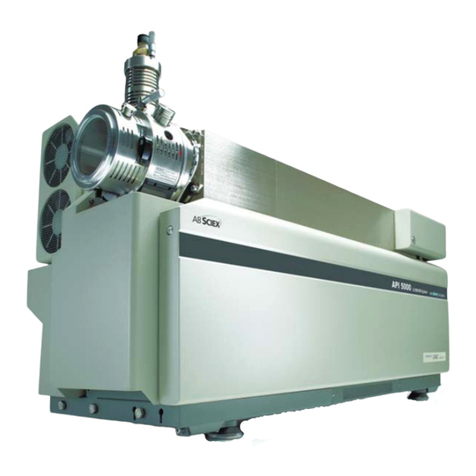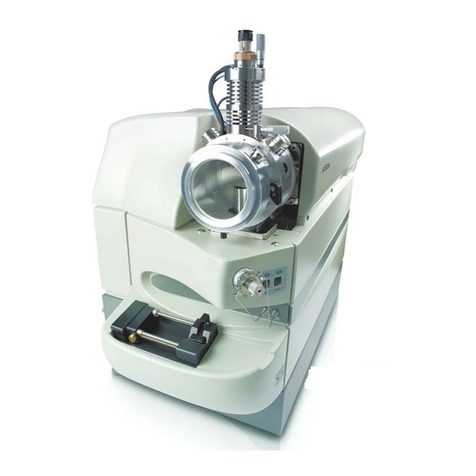
Contents
System User Guide
Document Number: D5030863 A
4500 Series of Instruments
5 of 142
Show DAD Data . . . . . . . . . . . . . . . . . . . . . . . . . . . . . . . . . . . . . . . . . . . . . . .78
Generate TWCs . . . . . . . . . . . . . . . . . . . . . . . . . . . . . . . . . . . . . . . . . . . . . . . .78
Adjust the Threshold . . . . . . . . . . . . . . . . . . . . . . . . . . . . . . . . . . . . . . . . . . . .79
Data Processing . . . . . . . . . . . . . . . . . . . . . . . . . . . . . . . . . . . . . . . . . . . . . . . . .80
Graphs . . . . . . . . . . . . . . . . . . . . . . . . . . . . . . . . . . . . . . . . . . . . . . . . . . . . . . .81
Zoom in on the y-axis . . . . . . . . . . . . . . . . . . . . . . . . . . . . . . . . . . . . . . . . . . .82
Zoom in on the x-axis . . . . . . . . . . . . . . . . . . . . . . . . . . . . . . . . . . . . . . . . . . .82
Chapter 8 Analyzing and Processing Quantitative Data . . . . . . . . . . . . . . . . . . 85
Quantitative Analysis . . . . . . . . . . . . . . . . . . . . . . . . . . . . . . . . . . . . . . . . . . . . . .85
Quantitation Methods . . . . . . . . . . . . . . . . . . . . . . . . . . . . . . . . . . . . . . . . . . .85
About Results Tables . . . . . . . . . . . . . . . . . . . . . . . . . . . . . . . . . . . . . . . . . . .86
Quantitation Methods and Results Tables . . . . . . . . . . . . . . . . . . . . . . . . . . . .86
Create a Method using the Quantitation Method Editor . . . . . . . . . . . . . . . . .86
Create a Results Table using the Quantitation Wizard . . . . . . . . . . . . . . . . . .87
Create a Standard Query . . . . . . . . . . . . . . . . . . . . . . . . . . . . . . . . . . . . . . . .88
Results Table Right-Click Menu . . . . . . . . . . . . . . . . . . . . . . . . . . . . . . . . . . .90
Peak Review and Manual Integration of Peaks . . . . . . . . . . . . . . . . . . . . . . . . .91
Review Peaks . . . . . . . . . . . . . . . . . . . . . . . . . . . . . . . . . . . . . . . . . . . . . . . . .92
Manually Integrate Peaks . . . . . . . . . . . . . . . . . . . . . . . . . . . . . . . . . . . . . . . .95
Peak Review Right-Click Menu . . . . . . . . . . . . . . . . . . . . . . . . . . . . . . . . . . . .96
Calibration Curves . . . . . . . . . . . . . . . . . . . . . . . . . . . . . . . . . . . . . . . . . . . . . . . .97
View Calibration Curves . . . . . . . . . . . . . . . . . . . . . . . . . . . . . . . . . . . . . . . . .98
Overlay Calibration Curves . . . . . . . . . . . . . . . . . . . . . . . . . . . . . . . . . . . . . . .99
Calibration Curve Right-Click Menu . . . . . . . . . . . . . . . . . . . . . . . . . . . . . . . .99
Sample Statistics . . . . . . . . . . . . . . . . . . . . . . . . . . . . . . . . . . . . . . . . . . . . . . . .100
View the Statistics for Standards and Qcs . . . . . . . . . . . . . . . . . . . . . . . . . .100
Compare Results Between Batches . . . . . . . . . . . . . . . . . . . . . . . . . . . . . . .101
Appendix A Turbo V™ Ion Source User Reference . . . . . . . . . . . . . . . . . . . . . .105
Introduction to the Ion Source . . . . . . . . . . . . . . . . . . . . . . . . . . . . . . . . . . . . . .105
Probes . . . . . . . . . . . . . . . . . . . . . . . . . . . . . . . . . . . . . . . . . . . . . . . . . . . . . .106
Gas and Electrical Connections . . . . . . . . . . . . . . . . . . . . . . . . . . . . . . . . . .108
Ion Source Latch . . . . . . . . . . . . . . . . . . . . . . . . . . . . . . . . . . . . . . . . . . . . . .108
Source Exhaust System . . . . . . . . . . . . . . . . . . . . . . . . . . . . . . . . . . . . . . . .108
Installation . . . . . . . . . . . . . . . . . . . . . . . . . . . . . . . . . . . . . . . . . . . . . . . . . . . . .109
Install the Ion Source . . . . . . . . . . . . . . . . . . . . . . . . . . . . . . . . . . . . . . . . . . .109
Optimization . . . . . . . . . . . . . . . . . . . . . . . . . . . . . . . . . . . . . . . . . . . . . . . . . . .111
Optimize the TurboIonSpray®Probe . . . . . . . . . . . . . . . . . . . . . . . . . . . . . . .111
Optimize the APCI Probe . . . . . . . . . . . . . . . . . . . . . . . . . . . . . . . . . . . . . . .114
Maintenance . . . . . . . . . . . . . . . . . . . . . . . . . . . . . . . . . . . . . . . . . . . . . . . . . . .116
Clean the Probes . . . . . . . . . . . . . . . . . . . . . . . . . . . . . . . . . . . . . . . . . . . . . .116
Remove the Ion Source . . . . . . . . . . . . . . . . . . . . . . . . . . . . . . . . . . . . . . . . .117
Remove the Probe . . . . . . . . . . . . . . . . . . . . . . . . . . . . . . . . . . . . . . . . . . . . .117
Clean the Electrode Tube . . . . . . . . . . . . . . . . . . . . . . . . . . . . . . . . . . . . . . .118
Adjust the Electrode Tip Extension . . . . . . . . . . . . . . . . . . . . . . . . . . . . . . . .119
Replace the Corona Discharge Needle . . . . . . . . . . . . . . . . . . . . . . . . . . . . .120
Replace the Sample Tubing . . . . . . . . . . . . . . . . . . . . . . . . . . . . . . . . . . . . .121
Troubleshooting . . . . . . . . . . . . . . . . . . . . . . . . . . . . . . . . . . . . . . . . . . . . . . . .122
Consumables . . . . . . . . . . . . . . . . . . . . . . . . . . . . . . . . . . . . . . . . . . . . . . . . . .123
































